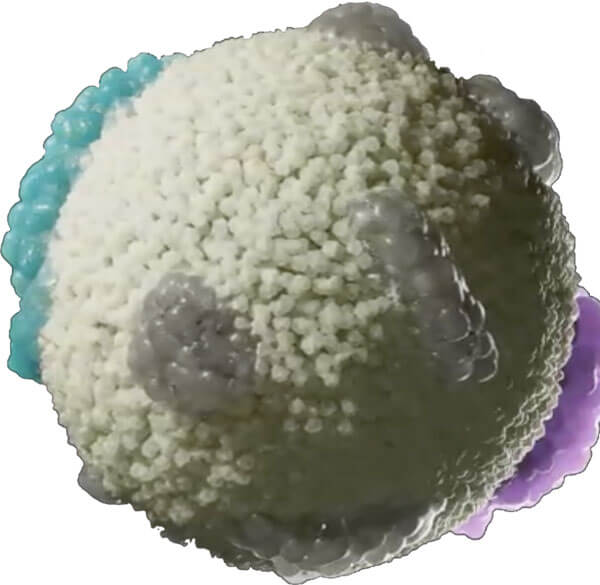What is a chylomicron?
Buildup of these triglyceride carriers can cause health problems.
One way triglycerides move through the blood is in the form of chylomicrons, pronounced ky-low-my-krons. These microscopic, sphere-shaped particles carry many TG molecules.1,2
Chylomicrons form in the small intestine during digestion of fat that you eat. The chylomicrons eventually enter the bloodstream, which moves them to parts of the body that either use TGs for energy or store them for future use.2,15,37
Storage or use usually clears chylomicrons from the bloodstream within 3-4 hours after a meal.2,37 But some triglyceride disorders cause chylomicrons to remain in the blood stream much longer.15 As a result, a buildup of chylomicrons in the pancreas may lead to inflammation, called acute pancreatitis.38
One such disorder that can cause chylomicrons to stay in the blood is familial chylomicronemia syndrome (FCS), a rare genetic disorder.38

